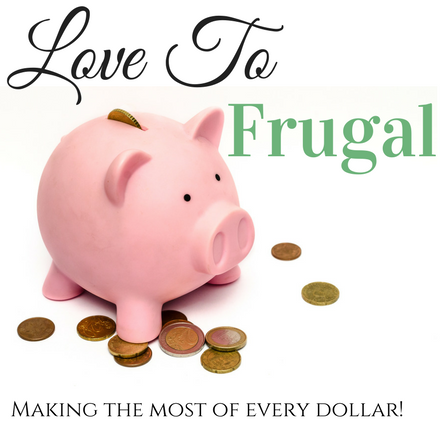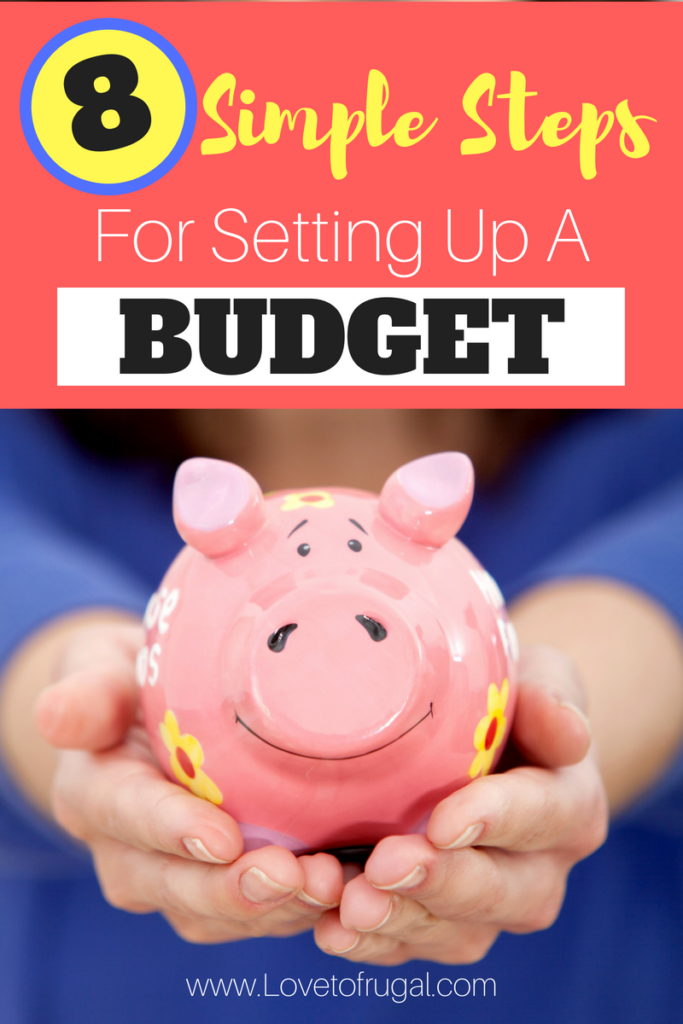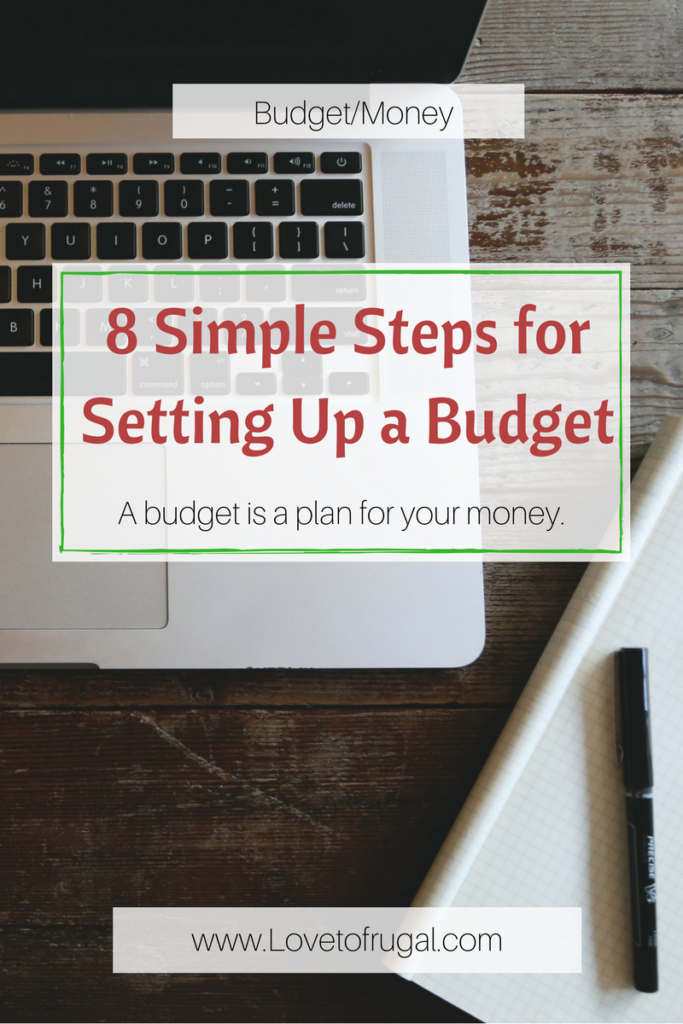8 Simple Steps for Setting Up a Budget The Easy Way!
There’s that dirty word! Just hearing, “you need a budget” is enough to make you run and hide! Many believe that budgets are restrictive, boring and don’t allow for any fun, but that’s just not true! It’s all how we look at things. Budgets can be just the opposite. Setting up a budget can be very freeing.
Budgets give you “permission” to spend. Therefore, a budget is a plan for your money, so you can tell your money what to do, instead of wondering where it went.
Making a budget isn’t particularly hard, but it’s sticking to it that can sometimes be a challenge. Budgets change constantly. That’s why its important to make budgeting a monthly To Do item, so don’t be afraid to do this.
This first step to setting up a budget and getting a handle on your finances is to know where your money is going. If you’re like me, I prefer to use the good ole pen and paper method. If you are more comfortable using an app on the computer or some kind of spreadsheet, that’s great! Use what you are most likely to be comfortable with and will stay with.
So lets get started!
*This post may contain affiliate links, which means that if you buy a suggested product, I will earn a small commission, at no extra cost to you. For more information, see my disclosure page.
8 Simple Steps for Setting Up a Budget:
1. Determine your NET income
Should be pretty easy…right? Or maybe not. For some, this is a set amount. For others, this could fluctuate, so the easiest way to determine one’s income, when it fluctuates, is to take the last 2-3 months of net income and average. That will give you a ballpark.
2. Determine your monthly expenses
Fixed Expenses: This would be rent/mortgage, savings, utilities, insurance, car payment, credit cards, day care, internet, savings, etc. Literally, anything that reoccurs every month. In addition to monthly expenses, you must also take into account, expenses that occur maybe 2-4 times a year, like homeowners insurance. You can get the monthly amount by taking the total and dividing by 12.
Variable Expenses: This would be groceries, entertainment, clothing. etc. These expenses can fluctuate from month to month. They must be budgeted for or it will throw all your efforts off in making your budget.
3. Budget According to Paydays
Rather than doing a “monthly” budget, I prefer to break it down according to paydays. I set up a spreadsheet of sorts, by putting the pay periods across the top of the page. An example of this would be if payday is on Friday, March 3rd and next payday is Friday, March 17th, then the pay period is 3/3-3/16. Thats column one. The next column would be 3/17-3/30. Then so on and so on. If you get paid once a week, follow the same premise.
4. Track Variable Expenses
Now…for the budgeting part. Some of our monthly expenses are very predictable, but others…not so much. A major monthly expense we all have is eating and whether it’s groceries or eating out, this one is probably the easiest one to go overboard on AND it is also the easiest one to trim.
The easiest way to get a handle on this is to keep track of what you’re spending for at least one month. This can be a very eye opening experience! The first time I did this, I couldn’t believe how much I had spent at the grocery store for a month AND had very little to show for it.
Don’t worry. It may take a couple or even a few months to get this right. Don’t beat yourself up if you go a little over on the first month. Just try to do better next time.
5. Listing Expenses
On the left side of the page, list your monthly, reoccurring expenses. I put them in chronological order..ie..if rent/mortgage is due on the 1st, start with that one. Then list the variable expenses. (Groceries will be purchased, most likely, every pay period.
A monthly budget can be set for that, but then divide it by the number of pay periods. That will then be your weekly, bi weekly or monthly grocery budget..depending on the number of paydays in the month.)
Once you’ve done that, then you can fill in the amounts in the appropriate pay period column. What this does, is it allows you see a clear picture of your monthly expenses and it also gives you an idea of how to divide of your paychecks.
6. Set (Budget) Amounts in Each Category
You must give every dollar of your income a name…or a job. What this means is you take your net income and minus all of your expenses. You should be at zero when you finish. This is called a zero based budget.
If you have more categories than money, here’s where the budgeting part comes in. You must adjust the amounts where you can.
Look to the variable categories, like groceries, eating out, entertainment, etc, to adjust. These categories can be the easiest to trim, but you will need to track spending in these categories for at least a month to determine what you are spending.
Once you have an idea, then you can see where you need to cut. If you have money left over, you must assign it to a category, like savings or debt reduction, if it applies.
7. Divide Large Expenses by Pay Periods
If you find that one or two expenses are wiping out your whole paycheck, like the mortgage/rent, then divide that expense by the number of paychecks in that month. Example…Your rent is due on the 1st and its $1,000. If you get paid twice a month, take $500 from each paycheck, instead of $1,000 from one check.
You must be disciplined enough to move that money over into a savings account for a couple of weeks or completely take it out of the account and set it aside. This can be done with just about anything, from paying bills to saving for a vacation or any large expense coming up in the future.
You can find out more about this type of budgeting method in my post “How To Use The Half Payment Budget Method”. It’s life changing!
8. Evaluate your budget every month
I promise you, it will change, but don’t let that stop you. If you find that you have more month left than money, now’s the time to take a good hard look at where you can improve your financial situation, whether its finding ways to cut expenses or increasing your income. If your budget balances out, that’s great! But there’s always room for improvement.
Remember, if you want to be successful with setting up a budget, you must keep it real! Be honest about your spending. Having a “why” is so important!
Seeing where your money is going is the first step to becoming debt free, building wealth and living the life you’ve always dreamed about.
I’m not going to lie and tell you this will be easy. Facing the cold, hard truth can be very scary and eye opening at the same time, but like with most things in life, fear of the problem can be much worse than the actual problem itself. The sooner you face it head on, the sooner you can get going on living a happier, more financially sound life.
If you’d like to read more about budgeting and getting out our debt, check out my post, 10 keys to getting out of debt or check out Dave Ramsey. His book, The Total Money Makeover, has helped millions of people get out of debt and turn their lives around.
I would love to hear how you’ve been successful at setting up a budget and your journey to be debt free. Please leave me a comment, anytime!
PS…Be sure to subscribe to Love To Frugal so you never miss a post!





3 Comments